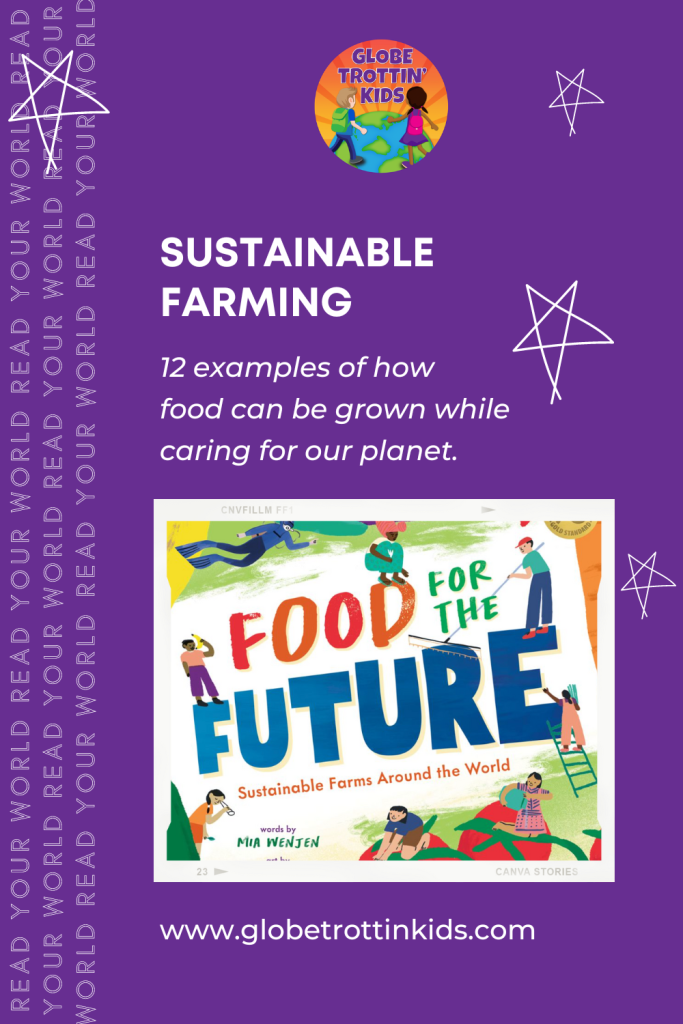Food For the Future: Sustainable Farms Around the World
“These farms grow food without using too much energy, water or harmful chemicals, and without harming the habitats (homes) of animals who live nearby.”

Self-maintaining food forests in Kenya, salt farms in the United States, an underwater greenhouse in Italy…
Food For the Future: Sustainable Farms Around the World introduces children to sustainable farming practices around the world.
This important picture book features 12 examples of how food can be grown while caring for our planet.
Some of the methods have been practiced for thousands of years (such as honey farms), while others are more recent inventions (like rooftop gardens).

Disclosure: We received a complimentary copy of this book for review purposes; however, all opinions are our own. This post contains affiliate links. By clicking through and making a purchase, we receive a small commission at no extra charge to you. All proceeds help support our free global education website. Thank you!

Food For the Future reaches a wide audience and can be revisited at different ages.
The colorful illustrations and rhyming couplets provide a fun introduction for younger children, while keyword definitions and informational endnotes allow older children to explore further.
The additional information about each farm (where it comes from, how it works, why it is sustainable, and an interesting fact) presents learning opportunities across the curriculum – from vocabulary and descriptive writing to geography and science.
Try This!
- Research some of the different farming practices. See what’s growing at Fenway Farms in Boston, learn how beekeepers in Yemen have been affected by conflict, explore the benefits and challenges of tolou keur (circular gardens) in Senegal, and more!
- Locate the country or city of each farm on a world map or globe. Ask questions such as: “What continent/hemisphere is this on? Name two neighboring countries. What is the nearest ocean or sea? How many miles is it from where you are now?
- Conduct simple science experiments related to sustainable farming. Investigate the effects of different soil types on plant growth, explore water conservation techniques, or study the impact of natural pest control methods.
- Find another example of sustainable farming, and create an informational presentation that includes: where it comes from, how it works, why it is sustainable, and an interesting fact.
- Visit a local farm that practices sustainable farming methods.
- Set up a small garden at school or in the community where students can grow their own fruits, vegetables, or herbs. Teach them about organic gardening techniques, composting, and the importance of soil health. Allow students to take responsibility for planting, watering, and maintaining the garden.
- Invite local farmers to speak about the challenges and benefits of sustainable farming.
- Read more books that focus on the importance of sustainable farming: Our School Garden by Rick Swann, The Farm That Feeds Us: A Year in the Life of an Organic Farm by Nancy Castaldo, Cycle of Rice, Cycle of Life: A Story of Sustainable Farming by Jan Reynolds
Mia Wenjen blogs on parenting, education, and children’s books at PragmaticMom.com and runs the nonprofit Multicultural Children’s Book Day. Browse more of her books here.
Robert Sae-Heng is also the illustrator of The One Thing You’d Save by Linda Sue Park.

